GENERAL DATA
In Manufacturing: Pharmaceutical and jewelry
💠 Industries That Use Turquoise Gemstone (Rough, Raw, or Polished)
Scientific name: Hydrated Copper Aluminum Phosphate (CuAl₆(PO₄)₄(OH)₈·4H₂O)
Main varieties: Persian Turquoise, Egyptian Turquoise, American (Sleeping Beauty, Bisbee), Chinese Turquoise
1. Jewelry & Luxury Goods Industry
Turquoise is one of the oldest gemstones used in fine jewelry, renowned for its vibrant blue to green hues, symbolic value, and natural veining (matrix).
Applications:
-
Rings, earrings, necklaces, bracelets
-
Inlay in silver and gold jewelry (especially in Persian and Southwestern American styles)
-
Beads, pendants, and luxury amulets
✅ Persian turquoise from Neyshabur is prized for its sky-blue color and matrix-free quality.
2. Cultural & Ethnic Artifacts Industry
Used historically in ceremonial artifacts, religious amulets, and tribal adornments.
Common in:
-
Persian, Native American, Tibetan, and Central Asian crafts
-
Turquoise-inlaid daggers, talismans, prayer beads, and statues
✅ Seen as a stone of protection, wisdom, and status
3. Gemstone & Mineral Trade / Lapidary Industry
Rough and raw turquoise is processed, cut, stabilized, or polished in lapidary workshops.
Key uses:
-
Cabochons and carvings
-
Slabs and tumbled stones for collectors
-
Matrix-style display specimens
✅ Stabilized turquoise is more durable and widely used in commercial trade
4. Metaphysical & Holistic Wellness Industry
Turquoise is considered a healing stone in crystal therapy and energy work.
Believed benefits:
-
Enhances communication and emotional balance
-
Protects against negative energy and electromagnetic stress
-
Strengthens immunity and detoxification in metaphysical systems
✅ Often used in chakra balancing, meditation jewelry, and room clearing rituals
5. Interior Design & Decorative Arts
Turquoise is incorporated into luxury decorative elements, especially in Persian, Moroccan, and Bohemian aesthetics.
Applications include:
-
Mosaic tiles, tabletops, and wall inlays
-
Decorative bowls, vases, and sculpture bases
-
Embedded into furniture or mirror frames
✅ Raw turquoise stones are also used in feng shui arrangements
6. Academic & Geological Research
Turquoise is analyzed in mineralogical studies, especially in:
-
Geochemistry and gemstone formation research
-
Comparative matrix analysis for provenance studies (e.g., Persian vs. Chinese origin)
-
Conservation of ancient turquoise artifacts
✅ Often part of museum displays and archaeological documentation
✅ Summary of Key Applications
| Industry | Common Uses |
|---|---|
| Jewelry & Luxury Goods | Rings, necklaces, fine inlays, Persian & tribal jewelry |
| Cultural & Ethnic Artifacts | Amulets, talismans, religious pieces, tribal crafts |
| Gemstone & Lapidary Trade | Rough cutting, cabochons, stabilized slabs, collector stones |
| Metaphysical & Wellness | Healing crystals, chakra tools, meditation beads |
| Interior Design & Décor | Mosaic tiles, embedded art, furniture accents |
| Academic & Geological Research | Provenance studies, geochemistry, museum collections |
🌍 Key Features of Turquoise Gemstone:
-
Color: Sky-blue (Iranian), greenish-blue (Tibetan/American), apple-green (rare)
-
Hardness: 5–6 on Mohs scale (requires care and stabilization)
-
Texture: Opaque with or without matrix (black, brown, golden veining)
-
Geographic Origins: Iran, USA, China, Egypt, Afghanistan, Chile
-
Symbolism: Protection, truth, success, serenity
💎 Comparison Table: Turquoise vs Agate vs Ruby vs Emerald
| Feature | Turquoise (Hydrated Cu-Al Phosphate) | Agate (Cryptocrystalline Quartz) | Ruby (Corundum – Al₂O₃ + Cr) | Emerald (Beryl – Be₃Al₂Si₆O₁₈ + Cr/V) |
|---|---|---|---|---|
| Color | Sky blue, greenish-blue, teal | Multicolor (banded), red, blue, moss, gray, etc. | Red to purplish-red (from chromium) | Green to bluish-green (from chromium or vanadium) |
| Transparency | Opaque | Translucent to opaque | Transparent to translucent | Transparent to translucent |
| Hardness (Mohs) | 5–6 | 6.5–7 | 9 | 7.5–8 |
| Geological Origin | Secondary mineral from copper-rich deposits | Volcanic rocks, geodes, and cavities | Metamorphic rocks, marble, and basalt | Pegmatites and hydrothermal veins |
| Main Sources | Iran, USA, China, Egypt, Afghanistan | Brazil, India, Uruguay, Madagascar | Myanmar, Thailand, Mozambique, Sri Lanka | Colombia, Zambia, Brazil, Afghanistan |
| Historical Importance | Ancient Persia, Egypt, Native American cultures | Roman & Islamic carvings, talismans | Burmese kings, Mughal crowns, ancient Indian scripts | Cleopatra’s favorite stone, Mughal jewelry |
| Cultural/Spiritual Use | Protection, communication, spiritual clarity | Grounding, balance, transformation | Passion, courage, vitality | Love, wisdom, rebirth |
| Main Industrial Uses | Jewelry, cultural artifacts, decor, healing stones | Jewelry, carvings, ornamental objects, architecture | High-end jewelry, royal collections, luxury artifacts | Fine jewelry, luxury brands, museum collectibles |
| Jewelry Value (General) | Moderate (value depends on origin & purity) | Affordable to moderate (based on type and pattern) | High (depends on color, clarity, origin) | Very high (especially Colombian and vivid green types) |
| Treatment/Stabilization | Often stabilized to enhance durability | Often dyed or heat-treated | Heat-treated; some synthetics exist | Oil-treated (traditional), some synthetics exist |
| Symbolism | Serenity, protection, truth, good fortune | Stability, strength, growth | Energy, confidence, love | Insight, loyalty, wealth |
🔷 Summary Insights:
-
Turquoise: Revered in Iranian and Native American heritage. Known for its spiritual value, protection against evil, and vivid sky-blue hue.
-
Agate: Valued for its grounding energy, variety of patterns/colors, and carvable nature. Less precious but culturally rich.
-
Ruby: A precious gemstone, globally associated with power, passion, and nobility. One of the rarest and most expensive.
-
Emerald: Symbol of eternal life and rebirth, highly valued in Persian, Egyptian, and Western royal traditions.
To order rough Turquoise, please contact us.
About Turquoise
It is a type of mineral that belongs to the group of phosphates and is considered as an ornamental stone.
The crystal structure of this stone is triclinic, and it often appears as a concentration of small, swollen, and spherical pieces or relatively large masses or in the shape of grape clusters, as well as cauliflower-like masses, or streaks among other stones. This mineral is more porous.
It is often blue or bluish green and sometimes sky blue. But its powder is white. This mineral is opaque and has a waxy luster.
The degree of hardness of it is 5 to 6 and its density is 2.6 to 2.8. This mineral does not have cleavage.
Native Americans believed that this stone protects the person who rides the horse and protects it from the evil eye in general. It was called the stone of sky or heaven and they believed that this stone builds a spiritual bridge between the material and non-material worlds and gives its owner a powerful psychic ability.
Turquoise Temperament
First degree of cold and third degree of dry.
Turquoise Chemical Constituent
In fact, this stone is base phosphate and aqueous of copper and aluminum.
Eating the calcination of it with honey removes kidney and bladder stones and cures epilepsy and splenomegaly. Eating this stone with the right spices is a tonic for the heart and stomach and helps to relieve suffocation, diarrhea, all kinds of internal wounds and infectious wounds.
Turquoise Side Effects
It is harmful for kidney.
Turquoise Dose
1.2 gram.
Turquoise Modifiers
To order Firoza stone, please contact us.

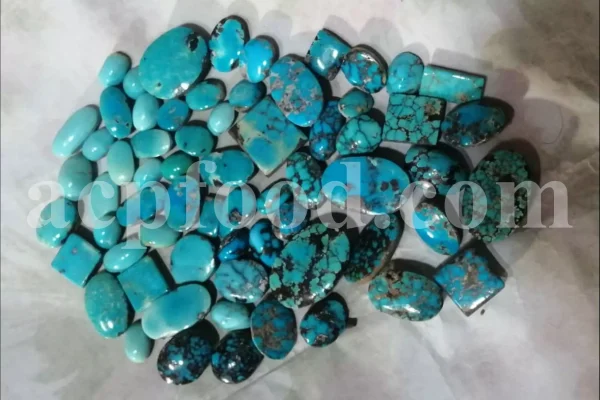
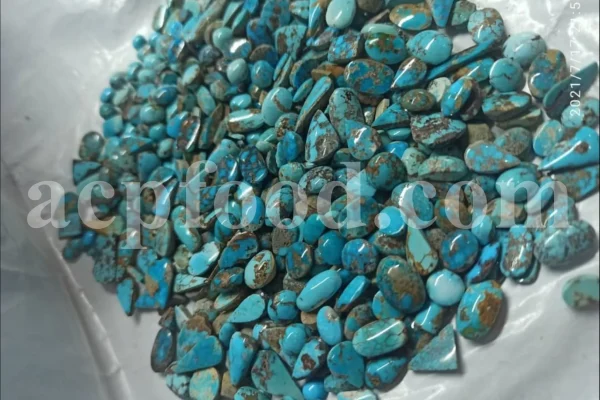
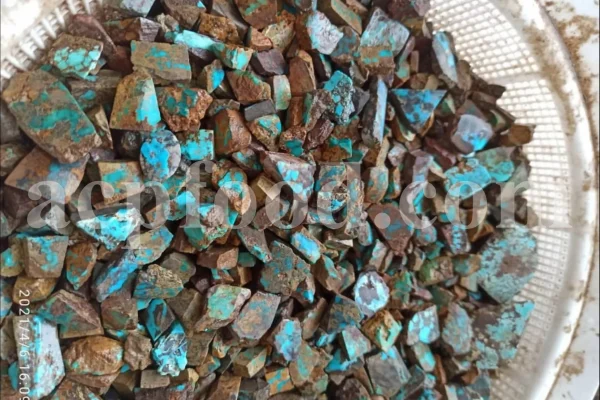

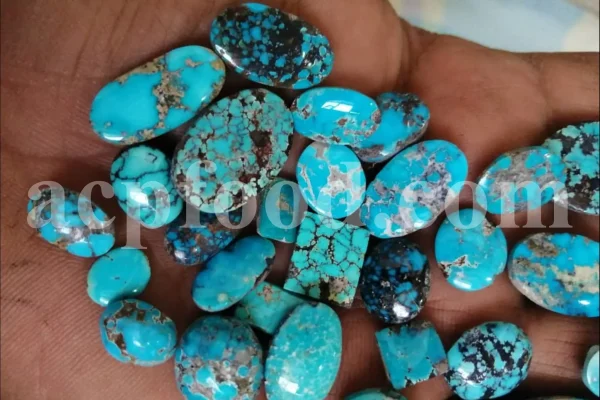
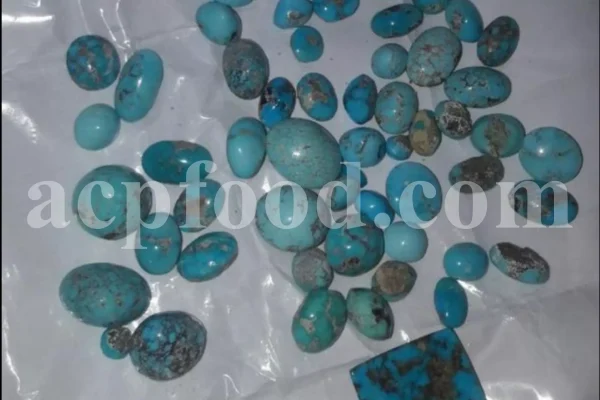
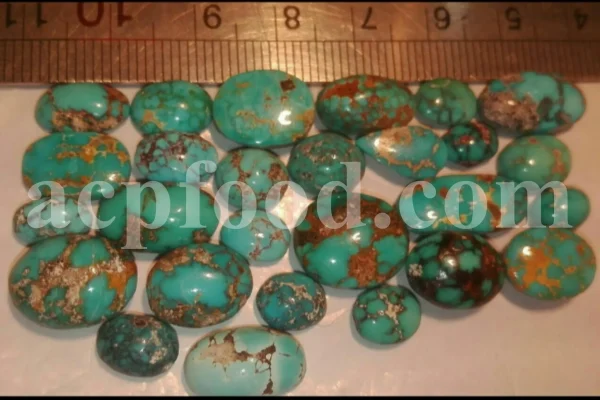

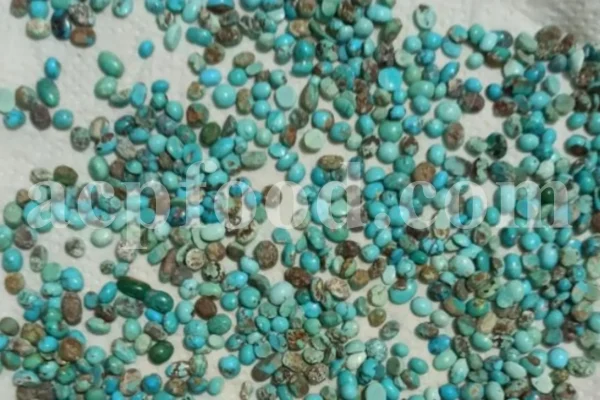
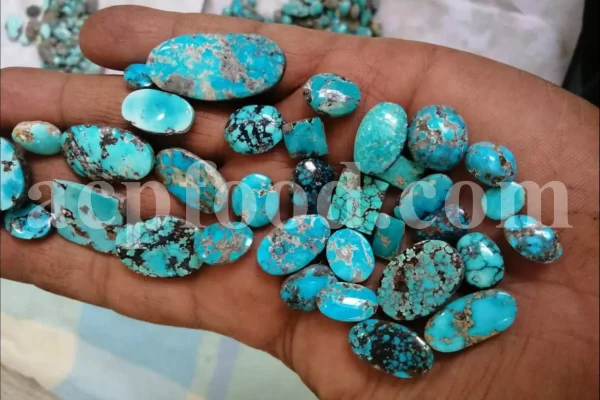
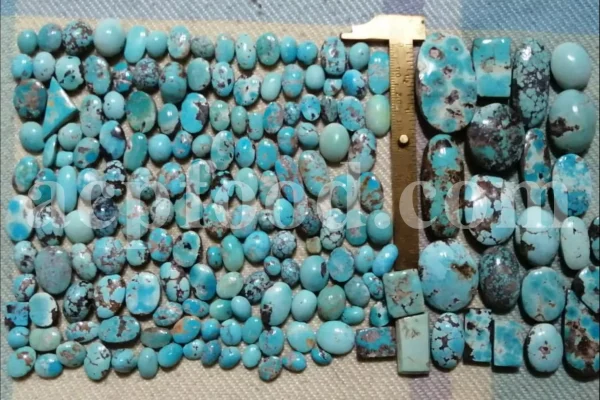
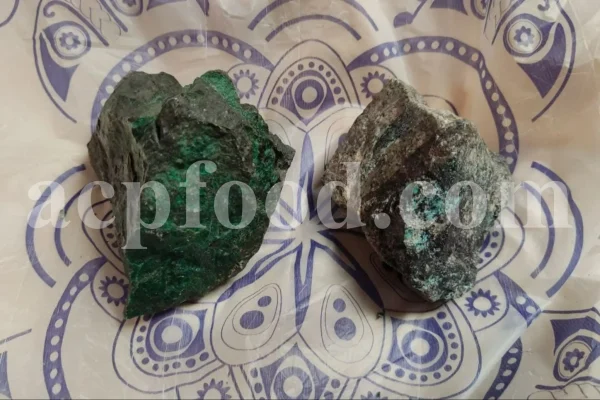
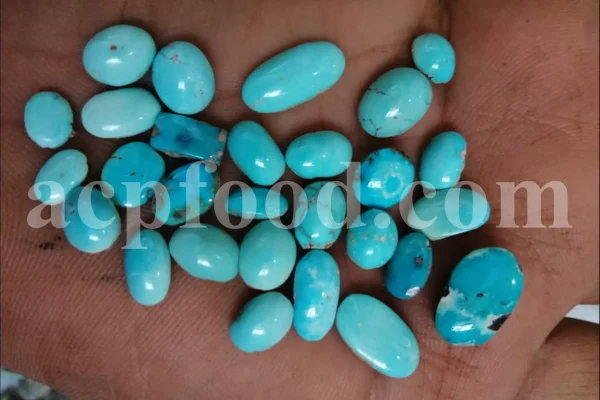
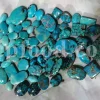
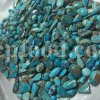
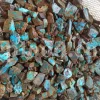

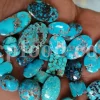

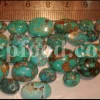
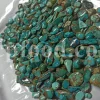

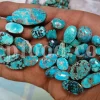
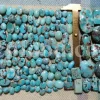

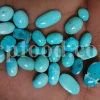
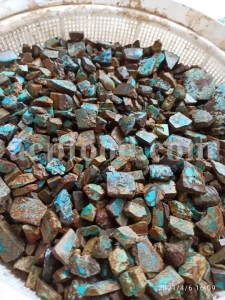
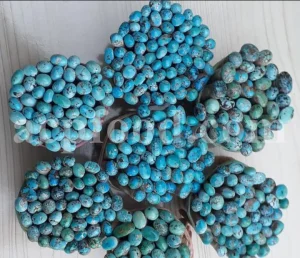
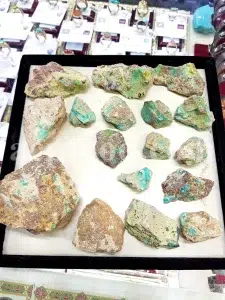
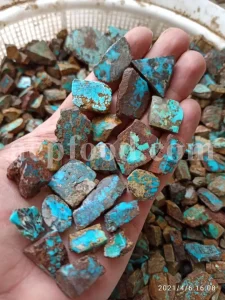

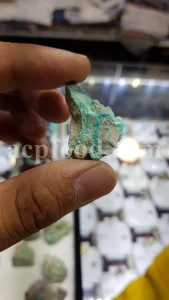
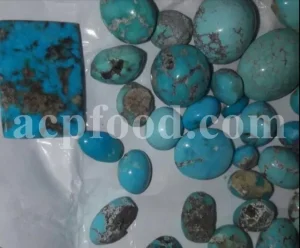
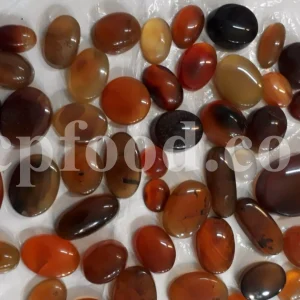
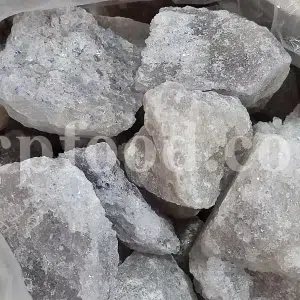
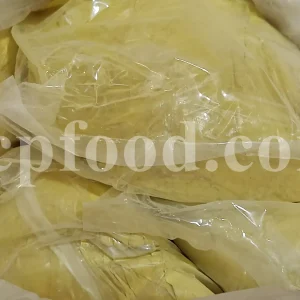
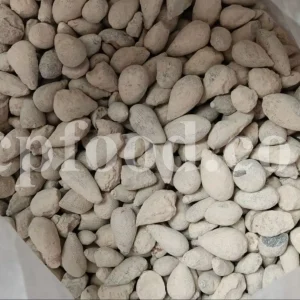
Reviews
There are no reviews yet.